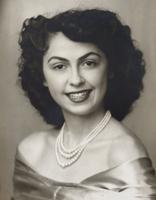From the beginning, the threat of capture was a real danger for generations of Americans on the frontier. Clara Blinn and her young son Willie had precious little time to ponder their fate as Indian captivity was a daily struggle.
Clara Isabel Harrington was born in Elmore, Ohio, in October 1847. She was a tiny, beautiful girl with dark hair and freckles, who exuded a joy for living. She married Richard Blinn on Aug. 12, 1865, and settled in Perrysburg, Ohio. Clara gave birth to son Willie in 1866.
In 1868, the Harrington clan migrated west to Kansas, but the young Blinn family traveled on to Colorado Territory. When they couldn’t make a decent living after the stagecoach line was rerouted, they joined an eight-wagon train to move closer to Clara’s family in Kansas. Riding in the supply wagon with Willie, Clara carried a bag of gold coins and nearly $800 in bills.
On Oct. 9, near Lamar, Colorado, they were attacked by Cheyennes. The men hid in the creek bed while Clara and Willie hid under a feather mattress in the supply wagon. After a siege of several days, the Indians took the supply wagon with them and set the remaining wagons afire.
On Oct. 12, help arrived from Fort Lyon. They found the burned wagon but Clara and Willie were missing. About four miles away, they found a note Clara had written on a card laying on a bush along the trail. It read: “Dick, if you live, save us if you can.”
They were taken to Black Kettle’s winter camp on the Washita River in Indian Territory. Clara smuggled out a letter dated Nov. 7, begging for assistance in getting released. Colonel William Hazen at Fort Cobb started negotiations for their release. But General Sheridan had already ordered Lt. Colonel George Armstrong Custer to “destroy the Cheyenne village.”
At dawn on a cold Nov. 27, Custer’s troops slaughtered everyone in the camp – including a fleeing Black Kettle – and burned the village after shooting 800 ponies. Major Joe Elliot and 18 soldiers were left behind pursuing fleeing Indians when Custer made his hasty retreat.
When the Army returned on Dec. 7, the soldiers’ bodies were found, along with Clara, shot in the head, and a very thin Willie, with head and face injuries. Bread was stuffed into the front of Clara’s dress. Nearby was a wrapped package of paper money and gold coins. It was believed that the soldiers killed them when she approached them in the fog.
Their bodies were buried at Fort Arbuckle. General Sheridan snipped off the hem of Clara’s dress and a lock of Willie’s hair to give to her family. Richard spent three months searching for his family. On Jan. 15, 1869, he arrived at Fort Arbuckle. He left with their personal effects after a lack of funds prevented him from taking their remains with him.
After the U.S. Army abandoned Fort Arbuckle in June 1870, all the bodies in the cemetery were reinterred at Fort Gibson. Richard kept two small stones from the Arbuckle Cemetery in his pocket until he died in September 1873 at age 31 in Ohio.
Clara’s remarkable courage kept her struggling for freedom to the very end of her ordeal. Richard would be happy to know that Clara and Willie are not forgotten.
Dr. Edwyna Synar has been writing and speaking about Women's History for over 20 years. Her stories in this series can be found at http://rememberladies.weebly.com.

















Commented
Sorry, there are no recent results for popular commented articles.